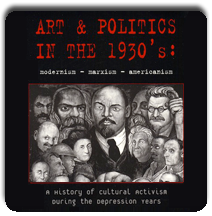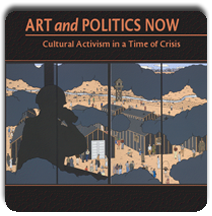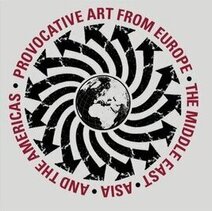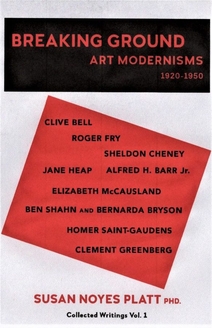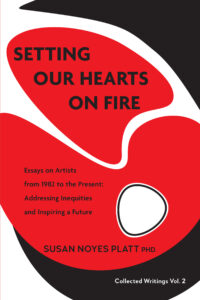June Sekiguchi
![]()
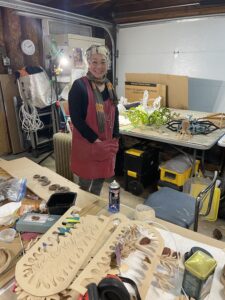
![]()
![]()


As we enter June Sekiguchi ‘s living room we are immediately immersed in a feeling of multi dimensional creativity. From the ceiling, the walls, the floor, strange flowing shapes appear everywhere. As the artist reaches for a stack of fiberboard cut with wavy edges we see an art form appear as the artist puts them together. But this seemingly simple radiating shape around a center is actually what the artist calls a radiolarium, a single cell structure with radiating symmetry.
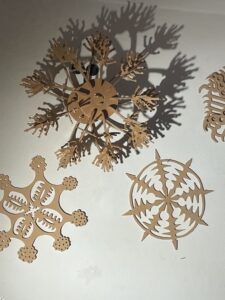
On the wall are twelve mandala-like carvings; two of them rise up into three dimensions. This shift to three dimensions while maintaining radial symmetry is what the artist’ s new works explore for an upcoming solo show at ArtX Contemporary opening in April.
June Sekiguchi grew up in Arkansas in a large family. In school she and her siblings were definitely seen as the “Other”, a traumatizing experience. But June left with her older sister to go to school in California while still in high school.
But of course the experience stayed with her. Although initially she embraced her Japanese background in California, soon she was exploring world cultures. Her focus has been patterns, looking at the extraordinary patterns of Muslim art for example.
From her public art to installation to intimate pieces, Sekiguchi explores patterns.
The patterns are embedded in various metaphorical forms. In a 2008 work Stacked Building Blocks she scroll cut patterns in wood and painted them inspired by shapes in Southeast Asia and North Africa. The planes were put together to form three dimensional shapes that can be moved around to suggest a gate or a building. Or simply a modular form.

Sekiguchi was inspired by children’s building blocks and would like adults to play with these oversize blocks.
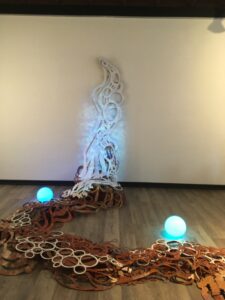
![]()


A 2016 installation the Pulse of Water, focused on a river, really a specific river, the Mekong River that she deeply experienced floating down it slowly in a boat in Laos. We see the water here invoked by energetic forms, white circles on top suggesting foam and dark brown patterns underneath, suggesting an accumulation of debris. Actually the river is both a history and a lifeline. The artist spoke of the dams that cut off the fishing there. But her focus in the installation was a bamboo bridge that the fishermen build across the river every year after it gets washed out by Monsoon rains. This sense of repeated actions, of feeling the pattern of life, is evoked by the installation.
![]()

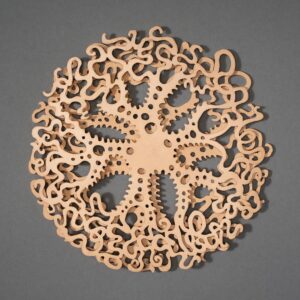
![]()
![]()
The current exhibition, still in progress in the artist’s studio, goes beyond the surface to the micro structures of radiollaria, a one celled organism that can absorb silica and create intricate skeletal patterns. These are the basis for Sekiguci’s current work.. Her patterns developed in both two and three dimensions are imaginative, inspired by the pioneering observations of 19th century scientists.
![]()
![]()
But one cannot visit Sekiguchi for long before the idea of meditation appears in the conversation. Her mandalas based on geometric patterns that represent harmony and peace, have long been a source of spiritual meditation. The geometric pattern represents according to one source “the cosmos or deities in various heavenly worlds.”
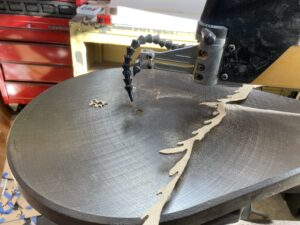
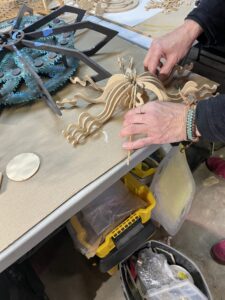
But Sekiguchi speaks of her creative process as a meditation whether it be with a scroll saw that cuts intricate designs into medium density fiberboard which the artist stated “cuts like butter.” Then she sands all edges of the sculpture, another meditative act. The three dimensionality of some of the works literally rises from the two dimensional mandalas.
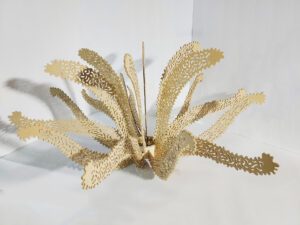
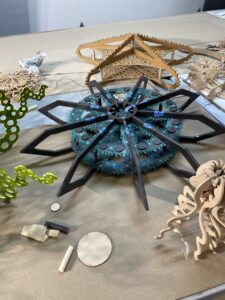
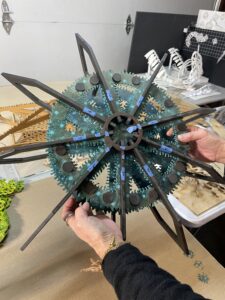

These artworks based on the natural world are a direct result of two artist residencies: on Willapa Bay and Vashon Island. There the artist observed barnacles and sea anemones, what are called sessile creatures that attach themselves to a surface. Sessile creatures have radial symmetry, they cannot move independently, if a creature moves it has bilateral symmetry.
![]()
![]()
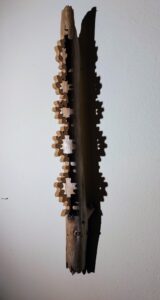
![]()
There is a sense of intense curiosity and exploration in Sekiguchi, she does not keep repeating ideas.
She also is embedded in her larger community as a curator for several organizations, including the Asian Pacific Cultural Center in Tacoma, which includes 40 different countries. They will be opening a new space next year, in which Sekiguchi plans to begin their exhibition program with the work of the founder of the Cultural Center, Patsy Surh.
So as June Sekiguchi intensely explores the inner structures of nature, she also supports her fellow artists in a larger exploration of the connections of people and community
Sekiguchi’s show The Geometry of Resilience is on display April 3 – May 24, 2025 at ArtX Contemporary, 512 1st Ave S, Seattle, WA 98104. A reception will be held at Pioneer Square Art Walk on April 3 & March 1, 5-8 p.m., and an artist talk on April 26, 1 p.m.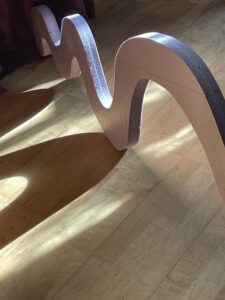
This entry was posted on March 19, 2025 and is filed under Culture and Human rights, Uncategorized.


